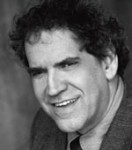By Rabbi Michael Leo Samuel

CHULA VISTA, California — The Jewish world has recently begun its new project of the Daf Yomi, or “Page of the Day.” Here is a brief history how the project originally began. Rabbi Meir Shapiro, leader of the World Agudath Israel, introduced a novel idea in 1923. He felt the daily study of the Talmud would serve to unite the Jewish people all over the world. The Talmud has 2,711 pages and the Daf Yomi cycle takes about 7 years, 5 months. At Temple Beth Shalom, we are trying to study the Daf Yomi cycle at our Sunday morning Talmud class, which is growing by leaps and bounds.
This project of Rabbi Shapiro proved to be an outstanding hit. My grandfather of blessed memory used to study the Talmud daily–even in Auschwitz.
If you never studied Talmud, this is a text for all of us to enjoy, argue, and create some memorable discussions. You can be sure that the rabbis of the Talmud never imagined that someone was recording all of their most intimate and provocative thoughts. Still, the study of the Daf Yomi Talmud is an invitation to dialogue with your friends on topics from Jewish history, folklore, law, values, and theology.
To assist my readers, here is a synopsis of some excellent resources to assist you along your way.
About ten days ago, I received some news about the Artscroll’s plans to release their Digital Talmud in both Hebrew and English. Artscroll offers a wonderful glimpse into the Litvish world of Talmud that is classical in many ways. The Digital Talmud is supposed to run about $999 for either the English or Hebrew version. By the way, the program will not work on Shabbat! All and all, the scholars who put this project together have done a magnificent job. Individual volumes are available at: http://www.artscroll.com
While I do not always share the ideology or the concerns of the Artscroll rabbis, their translation presents a very Litvish way of looking at the Talmud. The translation—for the most part—is quite good. Being a Litvak in attitude, the Artscroll offers a wonderful glimpse into a world of Jewish history.
The Daf Yomi cycle is available for the Ipad, but many of you may want to purchase the entire series when it comes out later in the year.
The Steinsaltz Talmud is an equally excellent project that is no less important. This past spring, Koren announced it was producing the entire series in English. I purchased Vol. 1 when it came out and I have used it for my Sunday morning Talmud class.
Koren Talmud Bavli, Vol. 1: Tractate Berakhot, Hebrew/English, Standard (Color) (English and Hebrew Edition) [Hardcover] ; Author: Adin Steinsatz ISBN-13: 978-9653015630 – Publishers: Koren Publishers, 2012; Price: $29.54 (only at Amazon.com)
Rabbi Adin Steinsaltz is planning on producing an Ipad version of his translation, which I think will offer another splendid choice. I suspect the Steinsaltz version will be comparably priced, but the translation of this work has a long way to go.
Unlike the Artscroll Talmud, Steinsaltz loves to illustrate his comments with historical notes and pictures (which are now in color). We are using his volume on tractate Berachoth for my Sunday class and all my students love his work. Steinsaltz is arguably the Rashi of our generation and he is a wonderful teacher. When I was in rabbinical school, nobody would be caught dead with a Steinsaltz Talmud, but if you visited any of the homes of the leading yeshiva rabbis—they all owned a complete set of Steinsaltz! I learned how to understand Jewish Aramaic from studying the Steinsaltz Talmud in Hebrew when I was a young lad in my late teens.
Like Artscroll, Koren is publishing each tractate separately for students of the Daf Yomi cycle (PDF).
For those of you who are interested in studying the Talmud online and cannot afford to pay the hefty costs of either the Steinsaltz or Artscroll Digital Talmud, there is always the Daf Yomi at http://halakhah.com that features the entire Soncino Talmud in a pdf format. R. Isadore Epstein was an amazing Talmudic scholar who presents a wonderful historical exposition of the Talmudic text.
If you are interested in the study of the Jerusalem Talmud, there is a wonderful website called Yedid Nefesh at http://www.yedidnefesh.com/yerushalmi/yerushalmi.htm Its author is Rabbi Yechiel Avraham Bar Lev and he is a fabulous scholar of the Jerusalem Talmud and Kabbalah. There are some excellent materials on the Kabbalah translated in both English and Spanish http://www.yedidnefesh.com/kaballah/kabbala.htm .
Lastly, I recently obtained HaMafteach / English Edition — *Author: Daniel Retter — Publisher: Feldheim, 2011– ISBN-10: 1583303308 – Price: $31.00
I love this book! The author presents a wonderful easy-to-use index on the entire Talmud. As indicated by its name, “The HaMafteach” is a “key” that integrates a variety of topics—from Alef to Tav. The book contains approximately 6,600 major subject entries, 27,000 minor sub-entries, 42,000 Talmudic reference sources, and 2,800 transliterated or dual-referenced glossary entries.
When I was looking up the subject of “Demons,” the HaMafteach provided a wonderful list of resources that have greatly enhanced the discussions we have in our new Sunday morning Talmud class.
Unfortunately, the book does not cover the Midrashic texts, or for that matter, the Halachic midrashim or even the Jerusalem Talmud. However, for the Babylonian Talmud, the author does a splendid job. It would be nice if the author wrote such a book exploring only the theological topics of the Talmud that are reflected in the various Aggadot of the Talmud.
*
Rabbi Samuel is spiritual leader of Temple Beth Shalom in Chula Vista. He may be contacted at michael.samuel@sdjewishworld.com